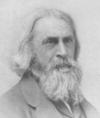 |
Benjamin Peirce:A system of Analytic MechanicsBoston, Little, Brown and Company, 1855 |
Click at a thumbnail to start reading from there. Back to the department history page. |
 |
Benjamin Peirce:A system of Analytic MechanicsBoston, Little, Brown and Company, 1855 |
Click at a thumbnail to start reading from there. Back to the department history page. |
| Last update: 8/5/2004. | Back to the department history page |